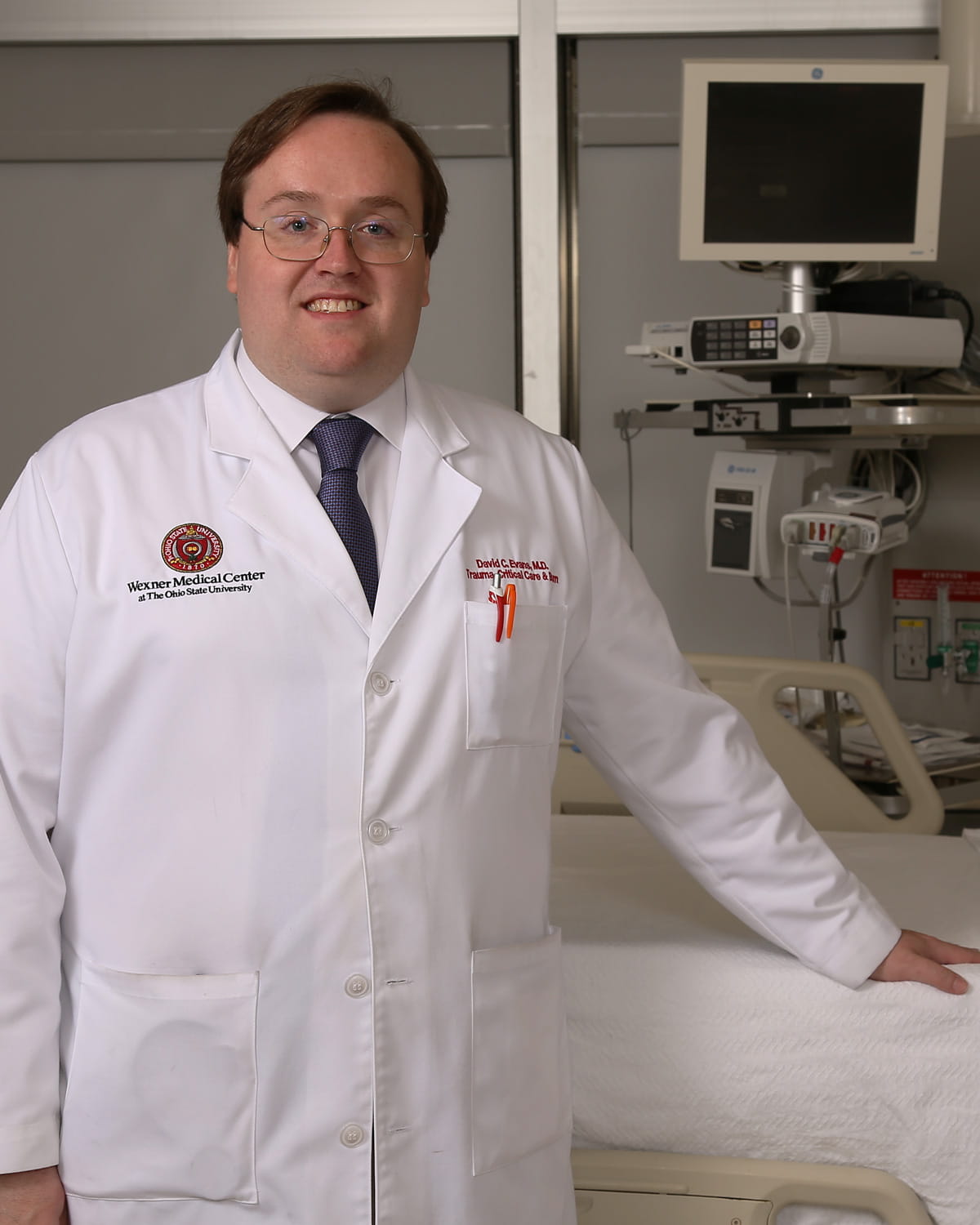September 12, 2013
 COLUMBUS, Ohio – Paramedics have very few tools to control severe bleeding at the scene of an emergency. Now, The Ohio State University Wexner Medical Center and the Newark Division of Fire and EMS are the first in Ohio and among the first in the United States to provide tranexamic acid (TXA) treatment to injured patients before they arrive at the hospital.
COLUMBUS, Ohio – Paramedics have very few tools to control severe bleeding at the scene of an emergency. Now, The Ohio State University Wexner Medical Center and the Newark Division of Fire and EMS are the first in Ohio and among the first in the United States to provide tranexamic acid (TXA) treatment to injured patients before they arrive at the hospital.
“This inexpensive drug effectively reduces bleeding in hospital trauma centers and emergency departments,” said Dr. David C. Evans, assistant trauma medical director and a surgeon at Ohio State’s Wexner Medical Center. “We’ve seen it successfully used by the military for casualties in Iraq and Afghanistan. Now, we’re excited to bring this treatment option to paramedics in Ohio.”
Evans and his team worked with Dr. Howard Mell, medical director for Newark Division of Fire and EMS, to establish the protocol for giving TXA to trauma victims.
“We have an excellent paramedic team, but the reality is Level-1 trauma care is 40 miles away,” Mell said. “We worked with Ohio State to add this state-of-the-art treatment so that we continue to provide the best care for the citizens of Newark.”
TXA is a generic anti-fibrinolytic agent that prevents blood clots from dissolving. Evans said time is the main reason to take it to the scene of a rural emergency. TXA is most effective when the first dose is given within one hour of injury. It must then be followed by a second intravenous dose that is given at Ohio State’s Wexner Medical Center. British and American military studies have shown that severely injured trauma victims who receive TXA have a 14 percent lower relative risk of fatal hemorrhage than those who do not receive the drug.
Theresa Mitchell, 67, of Newark, received TXA when she crashed her bicycle this week on a Newark bike path and broke her leg, shoulder, wrist and finger. Paramedics were also concerned about internal bleeding and started the treatment while waiting for a medical helicopter to arrive.
“I’m so glad that medicine was there for me, otherwise, who knows if I’d be here right now,” Mitchell said.
###
For more information, contact Scott Eley in Ohio State’s Division of Trauma, Critical Care and Burn: 614-293-9313 or Scott.Eley@osumc.edu.
A high quality photo of Dr. David Evans is available at: http://go.osu.edu/Whz
Contact: Marti Leitch, Medical Center Public Affairs and Media Relations, 614-293-3737 or Marti.Leitch@osumc.edu
